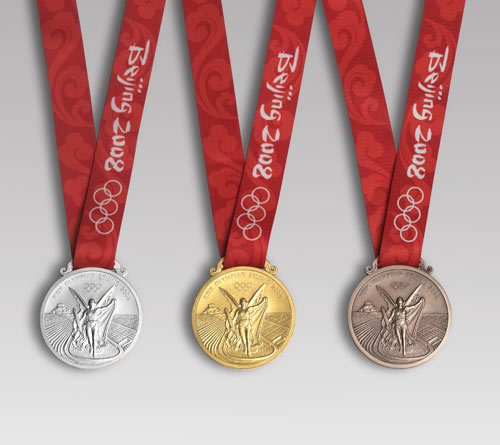Working with jade
The Jade ring must be matched with the medal metal, so it must comply with the necessary outer and inner diameters. Jade rings used for casting Olympic medals have been subject to rigorous quality controls, and those not up to the standard have been discarded.
To make use of those jade rings that do meet the quality criteria, metal medals were produced to fit the jade rings, and more than ten different sizes of seal ring were designed.
To avoid any loosening of the jade rings due to aging of the seals, glue has been used in casting the Olympic medals, a painstaking manual process.
Experts from the International Olympic Committee (IOC) were concerned about the risk of fragility when the jade ring design was proposed. The IOC required that jade rings should be strong enough to withstand a 2-meter drop test. The Shanghai Mint raised that standard to three meters.
A considerable effort has been made to bond the Jade rings successfully to the medals. Medals can survive a 3-meter drop test with only minor cracks on the jade rings, proved through destructive experiments.
The unique feature of the medals for the Beijing Olympics – the inlaying with jade – is commonly regarded as the most difficult process in making the medals. But Liang Dekui, chief of the production division of the Shanghai Mint, does not share this view, "There are 30 steps in making the gold medal, and the jade inlay is only one of these. The major challenge is in the processing of the metal because we are not familiar with two thirds of the process."
 |
|
Obverse side of the Medal and the Ribbon (BOCOG)
|
Medal production differs greatly from the traditional production of coins. Since production of a limited series is a far cry from mass production, the Shanghai Mint encountered a range of practical difficulties in producing the Olympic medals.
According to Liang, the biggest single problem was welding the medals to their clasps at high temperature without producing any change in the color of the metal.